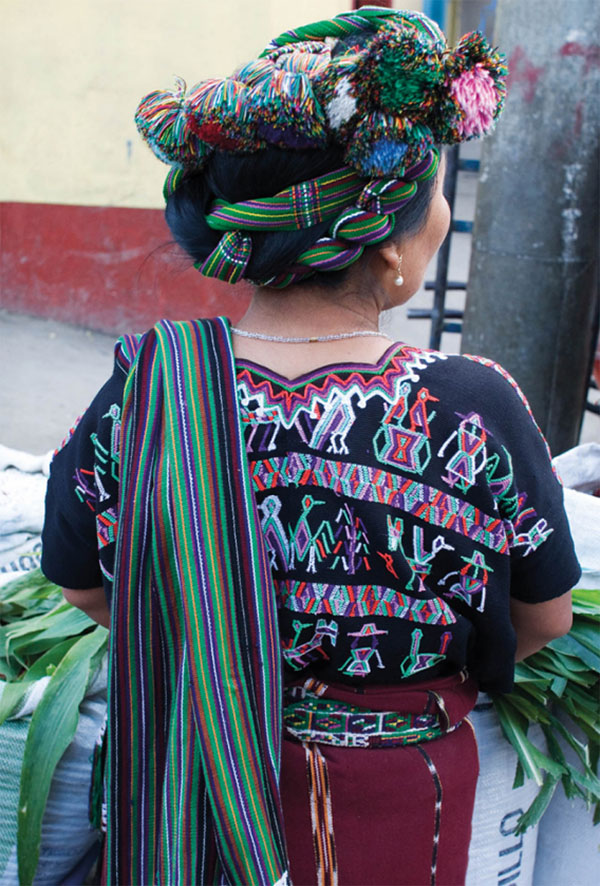HABLAS ESPAÑOL?
Antigua has more than 50 language schools, catering to all levels, from complete beginners to those in pursuit of total fluency. With highly affordable rates. Antigua’s language schools offer a range of classes and accommodations, including family homestays – with three full meals a day – or guesthouses; prices range from US$170 to US$320 a week. Note that there are also top schools in Quetzaltenango, Petén, and around Lago de Atitlán.
Antigüeña Spanish Academy, 1 C Pte 10; www.spanishacademyantiguena.com
Centro Lingüístico Maya, 5 C Pte 20; www.centrolinguisticomaya.com
Ixchel Spanish School, 4 Av Norte 32; www.ixchelschool.com
Ixquic, 7 Av Norte 74; www.ixquic.edu.gt
San José El Viejo, 5 Av Sur 34; www.sanjoseelviejo.com
As you leave (again through the side door), the neighboring building holds the former monastery where, in about 1702, a Spanish priest, Francisco Ximénez, first discovered the Popol Vuh, the K’iche’ sacred book, containing their story of creation involving the hero twins – it is considered one of the great literary masterpieces of the pre-Columbian Americas.
Santa Cruz del Quiché
North of Chichicastenango is Santa Cruz del Quiché @ [map] , the departmental capital. Santa Cruz is, at heart, a local’s town, with far fewer tourist crowds than bustling Chichi. The market days are Thursday and Sunday, but most visitors come here to visit K’umarkaaj (also called Utatlán), the former capital of the K’iche’ Maya, 4km (2.5 miles) southwest of the plaza. Like all the highland Maya capitals, K’umarkaaj is set superbly in a defensive position, surrounded by pine trees and ravines, and the ruins are low-rise and lack initial impact. Yet this is the fortified capital where Pedro de Alvarado and the conquistadors burned alive two K’iche’ kings in 1524 and sealed their control of the highlands. Today K’umarkaaj remains an active site for Maya religious ceremonies and prayers, especially beneath the grassy plaza, where a long tunnel leads to an underground chamber.
The Ixil region
One of the most compelling regions of the highlands, the Ixil region is an extremely traditional and beautiful area that also saw some of the bloodiest conflicts of the civil war during much of the 1970s and 1980s. Now that the war is over, the Ixil region (Ixil is the language spoken in these parts, region refers to the three main towns of Nebaj, Chajul, and Cotzal) is again welcoming a steady flow of visitors, especially hikers.
Quote
‘There is the original book and ancient writing, but he who reads and ponders it hides his face.’
Foreword from the Popul Vuh
Nebaj
Nebaj £ [map] is the largest of the Ixil towns, set dramatically in a broad green valley encircled by steep-sided ridges. The first thing you will notice is the startling costume worn by the Ixil women, arguably the finest in the Maya region: incredibly tightly woven white, green, and red huipiles and waist sashes, scarlet cortes (skirts) and Medusa-like headdresses of fabric and colorful woolen pom-poms. Check out the Sunday market for its colorful bustle, but you’ll find better prices for textiles at the co-operatives in the main plaza or from the women who regularly visit the town’s hospedajes to sell their wares. The hill-walking in the area is tremendous, and a variety of companies offer guided hikes. One hike takes you to the ‘model village’ of Acul, a strategic hamlet two hours’ walk from Nebaj, where villagers were resettled under pressure from the military during the civil war. Nearby is Hacienda San Antonio (www.haciendasanantonio.com), a beautiful Italian-Guatemalan farm where some of the best cheese in the country is made – and is for sale.

Colorfully-dressed woman in Nebaj.
Corrie Wingate/Apa Publications
Fact
Maya Nobel Peace Prize laureate Rigoberta Menchú grew up in the mountains north of the town of Uspantán, in the El Quiché region, and chapters in her autobiography, Crossing Borders, cover the region.
Quetzaltenango
The department of Quetzaltenango, with its chief city of the same name, sits high in a mountain range. Also Guatemala’s second city, Quetzaltenango $ [map] rivaled the capital for centuries as the country’s most important business, banking, and cultural city. By the 20th century, Quetzaltenango (also known as Xela – pronounced ‘Shella’ – from its Maya name Xelajú) was an impressive city, its wealth boosted by its pivotal position as a center for the coffee trade and a direct rail track to the Pacific port of Champerico. But the stately architecture and theaters were all but destroyed by a colossal earthquake in 1902, and ever since, Quetzaltenango has been relegated to second-division provincial status as a capital of the highlands, devoid of metropolitan swagger, but retaining a friendlier, less frenetic character. Looming above the buildings is the majestic Volcán Santa María, the most perfectly proportioned cone in Guatemala.